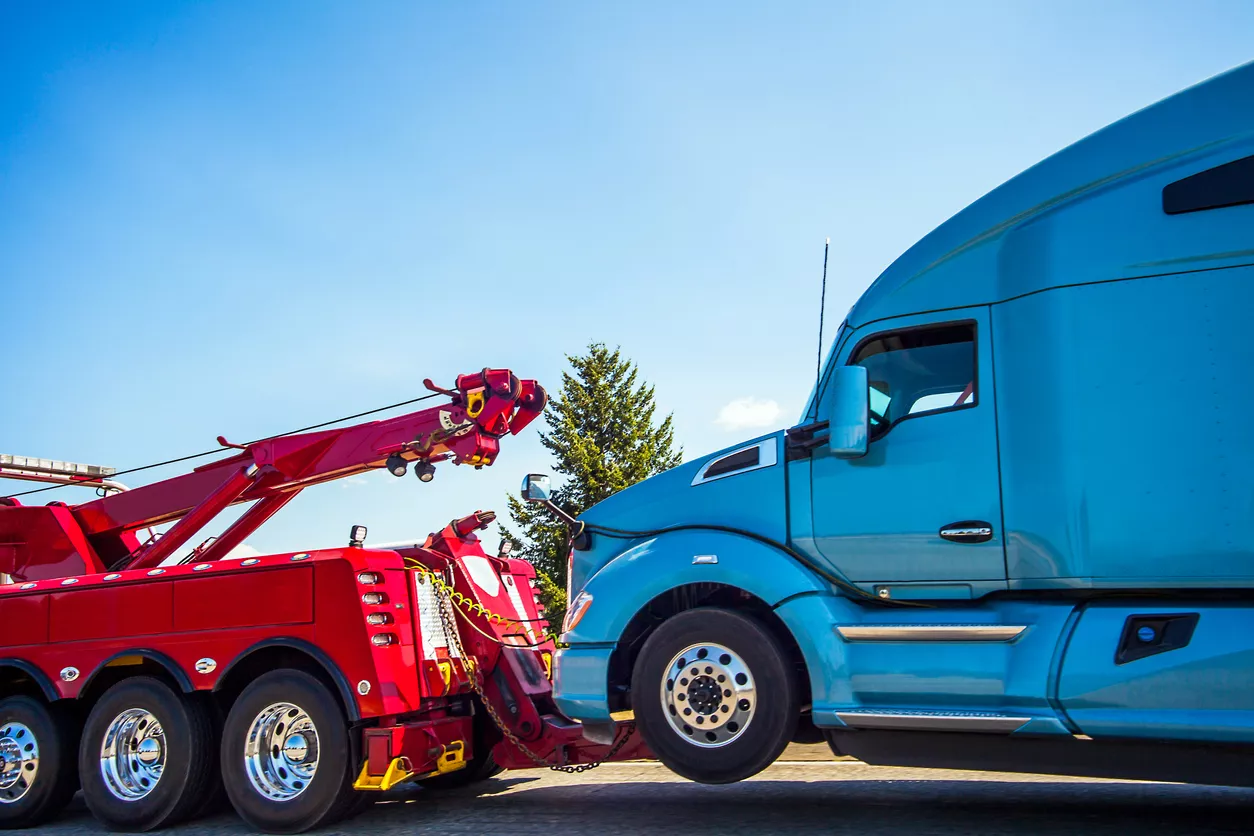Starting in February 2022, 3G networks will begin to shut down, affecting older Electronic Logging Devices (ELDs) still in use. In December 2017, the Federal Motor Carrier Safety Administration (FMCSA) mandated the ELD rule and started rolling it out. But since December 16, 2019, there have been, and still are, no exceptions to the rule.
All commercial drivers who are required to prepare hours-of-service (HOS) records of duty status (RODS) must use an Electronic Logging Device (ELD). Now is a good time to ensure you or your drivers will not have a service disruption.
What is an Electronic Logging Device (ELD)?
An Electronic Logging Device (ELD) can be an app on a smartphone or other wireless device like a tablet as long as the device meets the ELD rule’s technical specifications. An ELD is used in commercial trucking to serve as a simple and accurate way for keeping HOS records that drivers and fleet operators are required by law to maintain.
Per ELD rule section 395.22(g), portable ELDs must be mounted in a fixed position during commercial motor vehicle (CMV) operation and visible to the driver from a normal seated driving position. Only ELDs that are self-certified and registered on the FMCSA’s website can be used.
What Does an Electronic Logging Device (ELD) do?
In simplistic terms, an ELD makes an already-required daily task easier to do. An ELD connects to the truck’s engine, automatically records driving activity, and updates driver logs. The data collected provides dispatchers and drivers real-time access to available hours and violation risks.
The HOS information is automatically recorded in fleet management software, where managers and office personnel can review HOS statuses, run reports, and create compliant routes. HOS data is also displayed on the ELD device in the truck cab so that the driver can refer to it at any time or present it at a roadside inspection.
The FMCSA mandate requires that ELD data be displayed in a standardized format and transmitted to an inspector via Bluetooth, USB, wireless web services, or email. In addition to being used in roadside inspections, ELD data is reviewed during DOT compliance audits. Speaking of which, if you find yourself facing any DOT compliance audits, the Managed Services Compliance Specialists at TCS can help you prepare to pass your audit.
ELDs capture and transmit various data to make sure that your business accurately records hours of service and maximizes available driver hours. Data collection includes:
Vehicle Information:
- Vehicle identification
- Motor carrier identification
- Date
- Time
- Geographic location
- Miles traveled
- Engine power up and shutdown
- Yard moves
- 60-minute intervals of motion
- Engine diagnostics and malfunction
Driver Information:
- Driver or authorized user identification
- User login/logoff
- Hours-of-service (HOS)
- Duty status changes (driving, on-duty, off-duty)
- Personal use
- Certification of driver’s daily record
The ELD records this data automatically, but the driver or support staff can manually edit or annotate some information. Edits are tracked and have to be approved by the driver.
December 31, 2022, Verizon, the Last of the 3G Network Carriers, will Shut it Down
On Tuesday, December 14, 2021, FMCSA issued a final reminder to motor carriers to replace or upgrade all 3G-dependant ELDs. The time is now to plan accordingly to avoid service disruptions and compliance issues. If your ELD uses a 4G or 5G network, you don’t have to do anything at this time. BUT, if your ELD only uses a 3G network connection, contact your ELD mobile service provider right away to arrange your upgrade or replacement plans.
The exact dates in 2022 vary according to mobile carrier service providers. The first mobile service carrier to schedule their 3G network shut down is AT&T on February 22, 2022. The last mobile service carrier to schedule their 3G network shut down is Verizon on December 21, 2022. When your mobile service carrier’s 3G network shuts down for good in 2022, if you have a 3G-dependent ELD, you will have service disruptions and malfunction error messages displayed, which will be very bad, to state the obvious.
Under FMCSA rule 49 CFR 395.34, you will have eight days to get the malfunction resolved, which means ELD replacement unless the FMCSA grants an extension. However, having a malfunctioning ELD during your downtime will be super inconvenient for you and should absolutely be avoided.
Why You Should Definitely Avoid a Malfunctioning ELD
While your ELD is off-line malfunctioning, you will be subject to the rule 49 CFR 395.34 ELD malfunctions and data diagnostic events, whereby the FMCSA requires you do the following extra work:
Recordkeeping during ELD malfunctions:
A driver must do the following:
- Note the malfunction of the ELD and provide written notice of the malfunction to the motor carrier within 24 hours;
- Reconstruct the record of duty status for the current 24-hour period and the previous seven consecutive days, and record the histories of duty status on graph-grid paper logs that comply with § 395.8, unless the driver already possesses the records or the records are retrievable from the ELD; and
- Continue to manually prepare a record of duty status in accordance with § 395.8 until the ELD is serviced and brought back into compliance with this subpart rule.
Inspections during malfunctions:
When a driver is inspected for hours of service compliance during an ELD malfunction, the driver must provide the authorized safety official the driver’s records of duty status manually kept as specified in the above Recordkeeping section, items (2) and (3).
Driver requirements during ELD data diagnostic events:
Suppose an ELD indicates an inconsistency in the data that generates a data diagnostic event. In that case, the driver must follow the motor carrier’s and ELD provider’s recommendations in resolving the data inconsistency.
Motor carrier requirements for repair, replacement, or service of ELDs:
- If a motor carrier receives or discovers information concerning the malfunction of an ELD, the motor carrier must take action to correct the malfunction of the ELD. The remedy must occur within eight days of discovery of the issue or a driver’s notification to the motor carrier, whichever occurs first.
- A motor carrier seeking to extend the time permitted for repair, replacement, or service of one or more ELDs shall notify the FMCSA Division Administrator for the State of the motor carrier’s principal place of business within five days after a driver notifies the motor carrier under the above Recordkeeping section, item (1). Each request for an extension under this section must be signed by the motor carrier and must contain:
- The name, address, and telephone number of the motor carrier representative who files the request;
- The make, model, and serial number of each ELD;
- The date and location of each ELD malfunction as reported by the driver to the carrier; and
- A concise statement describing actions taken by the motor carrier to make a good faith effort to repair, replace, or service the ELD units, including why the carrier needs additional time beyond the eight days provided by this section.
- If the FMCSA determines that the motor carrier is continuing to make a good faith effort to ensure repair, replacement, or service to address the malfunction of each ELD, the FMCSA may allow additional time.
- FMCSA will provide written notice to the motor carrier of its determination. The determination may include any conditions that FMCSA considers necessary to ensure hours-of-service compliance. The determination shall constitute final agency action.
- A motor carrier providing a request for an extension that meets the requirements of the above Motor carrier requirements for repair, replacement, or service section, item (2) is deemed in compliance with § 395.8(a)(1)(i) and (a)(2) until FMCSA makes an extension determination under this section, provided the motor carrier and driver continue to comply with the other requirements of this section.
How Long Do You Have Before Your 3G Network Service Goes Offline?
Your 3G-dependant ELD goes offline depending on your mobile service carrier. The following is the currently published timeline, but check with your service carrier to verify:
- AT&T 3G – February 22, 2022
- Sprint 3G (T-Mobile) – March 31, 2022
- Sprint LTE (T-Mobile) – June 30, 2022
- T-Mobile 3G – July 1, 2022
- Verizon 3G: December 31, 2022
Other carriers, such as Xfinity, Cricket, Boost, Straight Talk, and others, use the AT&T, Verizon, and T-Mobile networks. These sunset dates are also subject to change. Be sure to check with your mobile service provider to confirm their 3G obsolescence plans.
Let Transportation Compliance Service Help You
Failure to comply with Federal and State regulations can have a disastrous effect on your bottom line. While remaining compliant is clearly in the best interest of every owner operator, it can be confusing, overwhelming, and time-consuming.
With TCS Ongoing Compliance Monitoring, you’ll have a dedicated compliance manager. They have made it their business to take care of yours, like reminding you to make sure your ELDs don’t fall out of service compliance.
Let the Managed Services Compliance Specialists at TCS help you keep your business on the road for the long haul.

